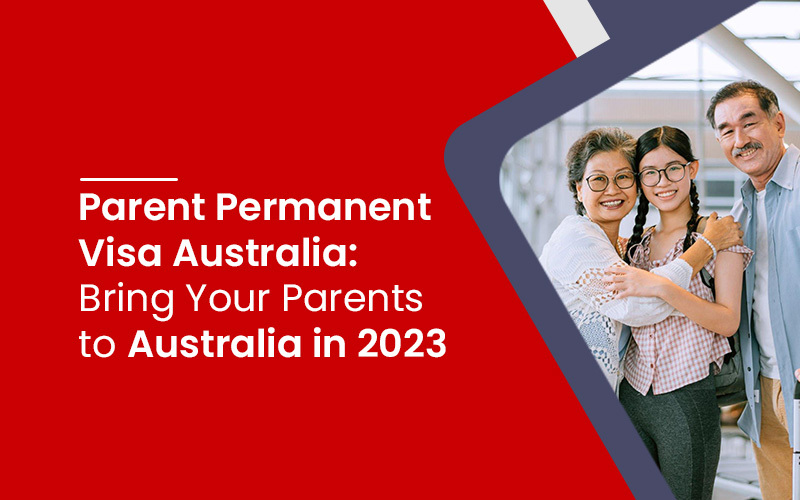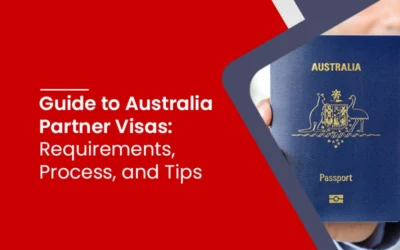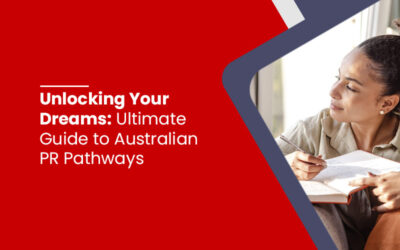Parent Permanent Visa Australia: A Guide to Bringing Your Parents to Australia in 2023

Table of Contents
Are you looking to bring your parents to Australia on a permanent basis? The Parent Permanent Visa is a great option for individuals seeking to reunite with their parents in Australia. This visa allows parents to live, work, and study in Australia indefinitely. It also allows them to access Australia’s public healthcare system and enroll in medicare.
The process of applying for a Parent Permanent Visa can be complex and time-consuming, so it’s important to understand the requirements and eligibility criteria before you begin.
Read More: What is ACS RPL Assessment for Australian Immigration? 💡💡
In this blog post, we will provide an overview of the Parent Permanent Visa, including the different types of visas available, the eligibility criteria, and the application process. We will also discuss the costs and processing times associated with this visa. By the end of this post, you will have a clear understanding of how to bring your parents to Australia permanently.
Permanent Parent Visa in Australia
The Parent Permanent Visa is a type of visa that allows the parent of an Australian citizen, Australian permanent resident, or New Zealand citizen to live permanently in Australia.
This visa is designed to reunite families and is suitable for parents who have a child living in Australia and want to live with them permanently. The visa allows the holder to work and study in Australia, access healthcare, and enroll in the social security system. It also allows the holder to travel to and from Australia for five years.
After this time, the holder can apply for a Resident Return visa to continue living in Australia permanently. To be eligible for this visa, the applicant must be sponsored by their child, who must be over 18 years old and able to assure support.
How do I bring my parents to Australia?
There are two types of permanent parent visas in Australia available:
- Contributory Parent Visa (Subclass143)
- Parent Visa (Subclass 103)
1. Contributory Parent (Migrant) Visa 143
The Contributory Parent Visa (subclass 143) is a permanent residence visa for parents of Australian citizens, Australian permanent residents, or eligible New Zealand citizens. It allows the holder to live in Australia indefinitely with their child and their family and grants access to certain social security and medical benefits.
To apply for this visa, a temporary Sponsored Parent Visa (subclass 173) or Sponsored Parent Visa (subclass 884) must first be obtained. When compared to the standard parent visa (subclass 103), the contributory parent visa has a higher application fee and a higher assurance of support bond.
This is because the Contributory Parent visa provides access to certain social security and medical benefits, and the higher fees are intended to offset these costs. Applicants must also meet certain health and character requirements.
The Contributory Parent visa requires a larger financial contribution from the applicant, which helps cover the costs of processing the visa application and providing social and health services to the applicant and their family.
Contributory Parent Visa Eligibility
- You must be the parent of an Australian citizen, permanent resident, or eligible citizen of New Zealand.
- be sponsored by an over-18 child able to assure support.
- meet health and character requirements.
- pay a higher visa application charge and an Assurance of Support bond
- Have filed an application for a Sponsored Parent (Temporary) visa (subclass 173 or 884)
- no outstanding debts to the Australian government
- intend to live in Australia permanently with my child and family.
Also read: Is it worth migrating to Australia for ICT professionals? 🤔🤔
Contributory Parent Visa Cost
The current costs for a Contributory Parent Visa (subclass 143) are as follows:
- Primary applicant (age 55 or over): AUD 5,775
- Primary applicant (age under 55): AUD 2,785
- Each additional applicant (over the age of 18): AUD 1,395
- AUD 350 for each additional applicant (under the age of 18).
These costs are subject to change and do not include other expenses that may be incurred during the visa application process. A contributory parent visa is more expensive than a standard parent visa (subclass 103).
2. Parent Visa (Subclass 103)
The Parent Visa (Subclass 103) is a permanent residence visa for parents of Australian citizens, Australian permanent residents, or eligible New Zealand citizens. It allows the holder to live permanently in Australia with their child and their family.
This visa allows the holder to work and study in Australia, access healthcare, and enroll in the social security system. It also allows the holder to travel to and from Australia for five years. After this time, the holder can apply for a Resident Return visa to continue living in Australia permanently.
Qualification for a Parent Visa
To be eligible for the Parent Visa (subclass 103), the applicant must:
- You must be the parent of an Australian citizen, permanent resident, or eligible citizen of New Zealand.
- be sponsored by an over-18 child able to assure support.
- meet health and character requirements.
- no outstanding debts to the Australian government
- intend to live in Australia permanently with my child and family.
The Parent Visa has a lower application cost and the assurance of a support bond but a longer processing time compared to the Contributory Parent Visa (subclass 143).
Parent Visa (Subclass 103) Fee
The current costs for a Parent Visa (subclass 103) are as follows:
- Primary applicant (age 55 or over): AUD 4,045
- Primary applicant (age under 55): AUD 2,155
- Each additional applicant (over the age of 18): AUD 1,075
- AUD 270 for each additional applicant (under the age of 18).
Learn More: How to write a Relationship Statement for your Partner Visa? 🖋️🖋️
These costs are subject to change and do not include other expenses that may be incurred during the visa application process. The costs for a parent visa are lower than the costs for a contributing parent visa (subclass 143).
How long can you stay in Australia with a permanent parent visa?

A Parent Permanent Visa (subclass 103 or 143) allows the holder to live permanently in Australia. This means that the holder can stay in Australia indefinitely as long as their permanent resident status is maintained.
Holders of a Parent Permanent Visa have five years from the date the visa is granted to travel to and from Australia. After this period, the visa holder may apply for a resident return visa to remain permanently in Australia.
It is important to note that a parent with a permanent visa must not be absent from Australia for more than two years at a time or risk losing their permanent resident status.
Australia Permanent Parent Visa Processing Time
The processing time for a permanent parent visa in Australia can vary, but the current estimated processing time is 25 months. You can check the current processing times for this type of visa using the Department of Home Affairs’ online visa processing times tool. It is also possible to pay an additional fee to have your application processed on a priority basis, which may reduce the processing time.
Read More: How to apply ACS skill assessment? 💪💪
How do I apply for a permanent parent visa in Australia?
Here is the step-by-step process for applying for a permanent parent visa in Australia:
- Check your eligibility: To apply for a Permanent Parent Visa, you must be the parent of a child who is an Australian citizen, permanent resident, or eligible New Zealand citizen. As part of the balance of family test, you must also have half of your children living permanently in Australia.
- Gather necessary documents: You will need to provide a range of documents as part of your visa application, including proof of your relationship with your child in Australia, evidence of your identity, and police clearance certificates.
- Apply: You can either apply online or through a paper application. If you are applying online, you will need to create an ImmiAccount and pay the application fee. If you are applying by paper, you will need to download the application form and send it to the Department of Home Affairs with the required documents and fee payment.
- Wait for a decision: After your application has been lodged, the Department of Home Affairs will assess your application and make a decision. This process can take several months, so it is important to be patient.
- Attend an interview: Depending on your circumstances, you may be required to attend an interview with a visa officer as part of the visa assessment process.
- Wait for a decision: After your application has been assessed, the Department of Home Affairs will inform you of its decision. If your application is successful, you will be granted a permanent parent visa.
- Pay the visa fee: If your application is approved, you will need to pay the visa fee before your visa can be granted.
- Activate your visa: Once you have paid the visa fee, your visa will be granted, and you will be able to enter Australia as a permanent resident.
Bonus for you: KA02 Report and their significance on ICT Applicants. ✌️✌️
Conclusion
In conclusion, the process of applying for a permanent parent visa in Australia can seem complex and overwhelming, but with careful planning and preparation, it is possible to bring your parents to Australia as permanent residents.
By understanding the eligibility requirements and gathering all of the necessary documents, you can increase your chances of success and ensure that your application is processed efficiently. While the process may take several months, the reward of being able to live with and support your parents in Australia is well worth the effort.
We at CDR Writers Australia provide you with various visa services and documentation, such as CDR reports, RPL reports, and other Australian immigration services. If you have any questions about immigration services to Australia, please contact us for free advice and consultation.
Recent Posts
- Benefits of RPL Writing for Professional Advancement—Seize the Opportunity! July 8, 2024
- Unlocking Your Potential: Benefits of NER Registration for Engineers—Don’t miss out! July 4, 2024
- 8 Advantages of being a Registered NER Engineer April 25, 2024
- Stage 1 Competency Standard for Professional Engineer December 4, 2023
- Secure Your Future: The Most In Demand Jobs for Skilled Migrants to Australia in 2024 November 3, 2023






